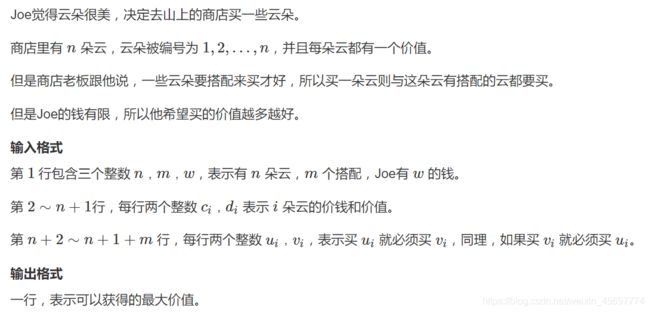【数据结构专题】并查集
A、AcWing 1250. 格子游戏

并查集解决的是连通性(无向图联通分量)和传递性(家谱关系)问题,并且可以动态的维护。抛开格子不看,任意一个图中,增加一条边形成环当且仅当这条边连接的两点已经联通,于是可以将点分为若干个集合,每个集合对应图中的一个连通块。
#includeB、AcWing 1252. 搭配购买
并查集缩点+01背包
可以利用并查集,将这m组配对购买的商品划到一个集合里,这样就可以确定买了其中一个就得买另一个。
//并查集没有办法通过一个点直接找到所有的该集合的点,但是这里我们可以O(n)把属于同一个集合的点缩点,缩成一个物品然后裸一个01背包
#include也可以用tarjan缩点+背包
#include